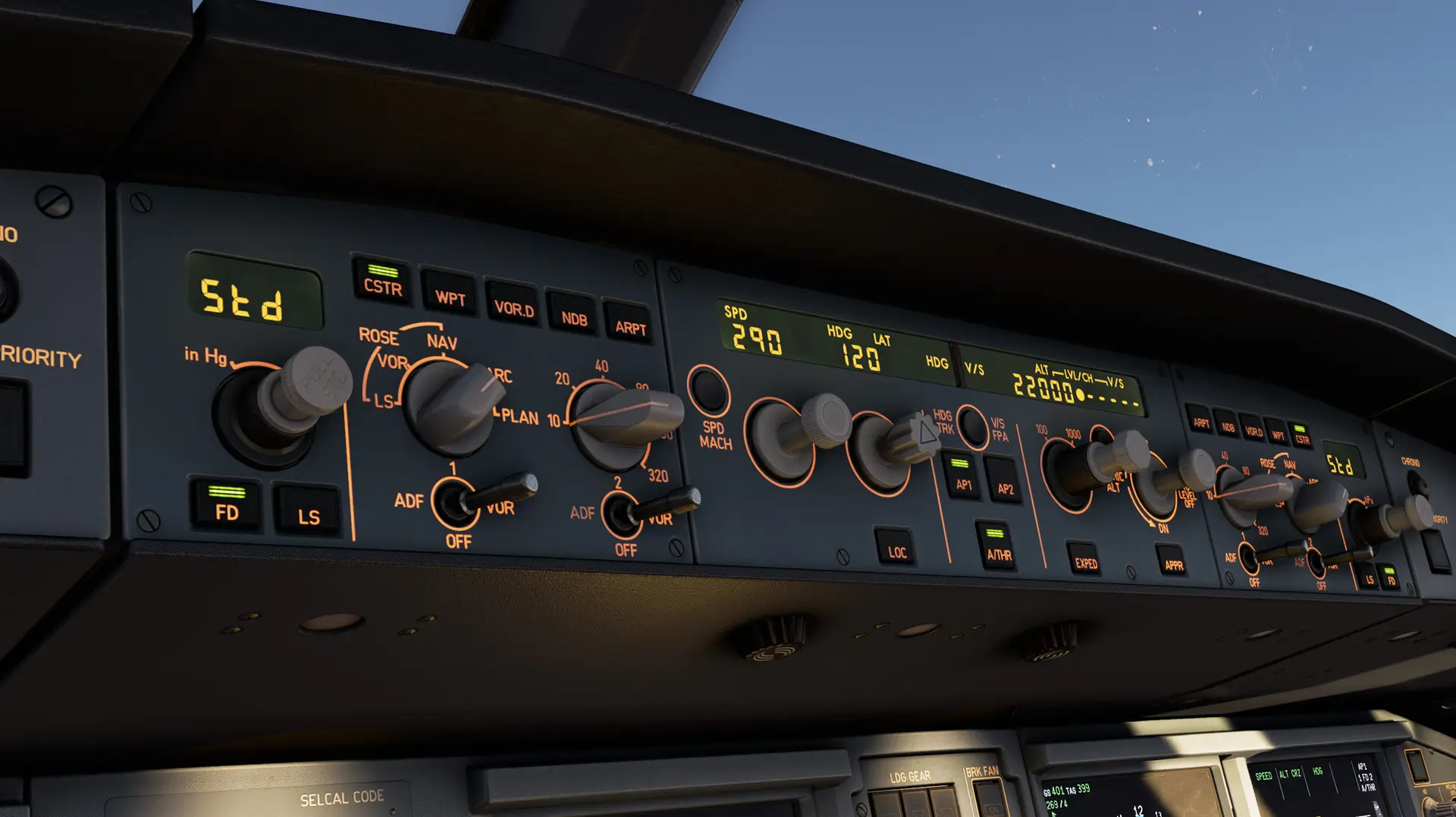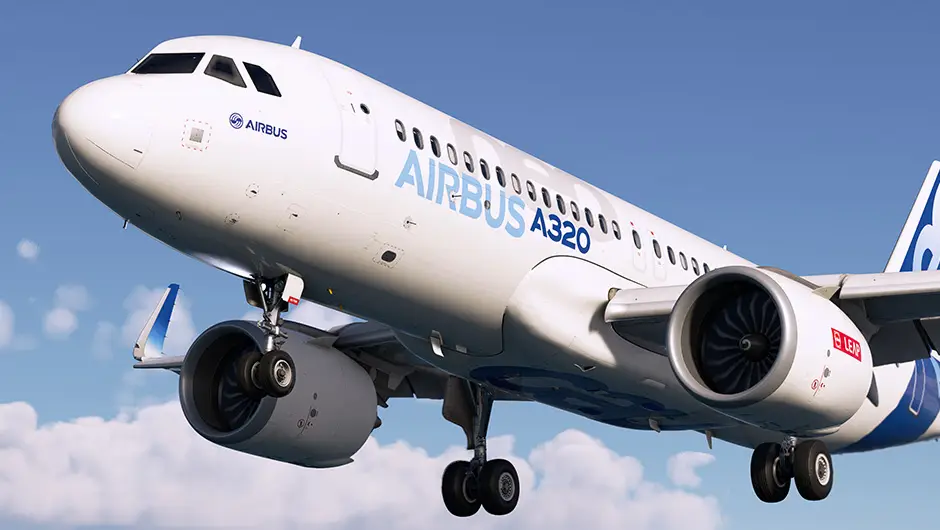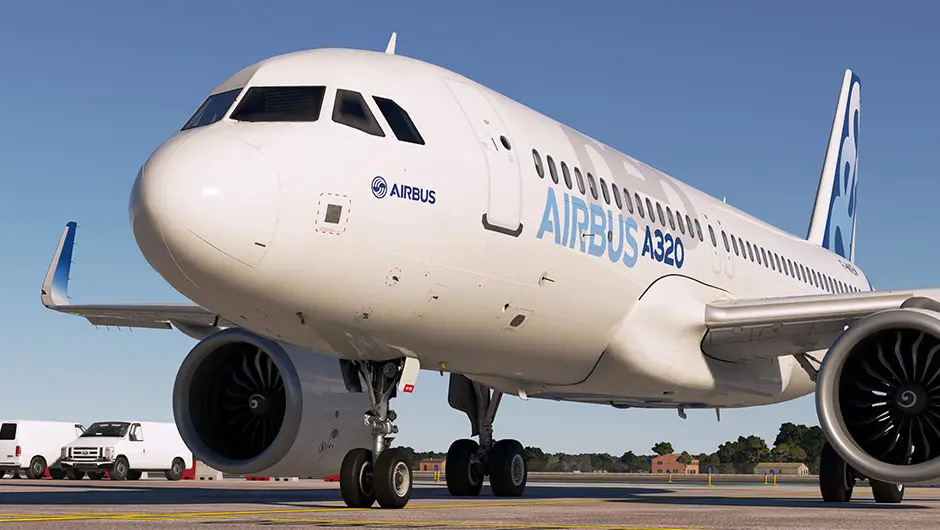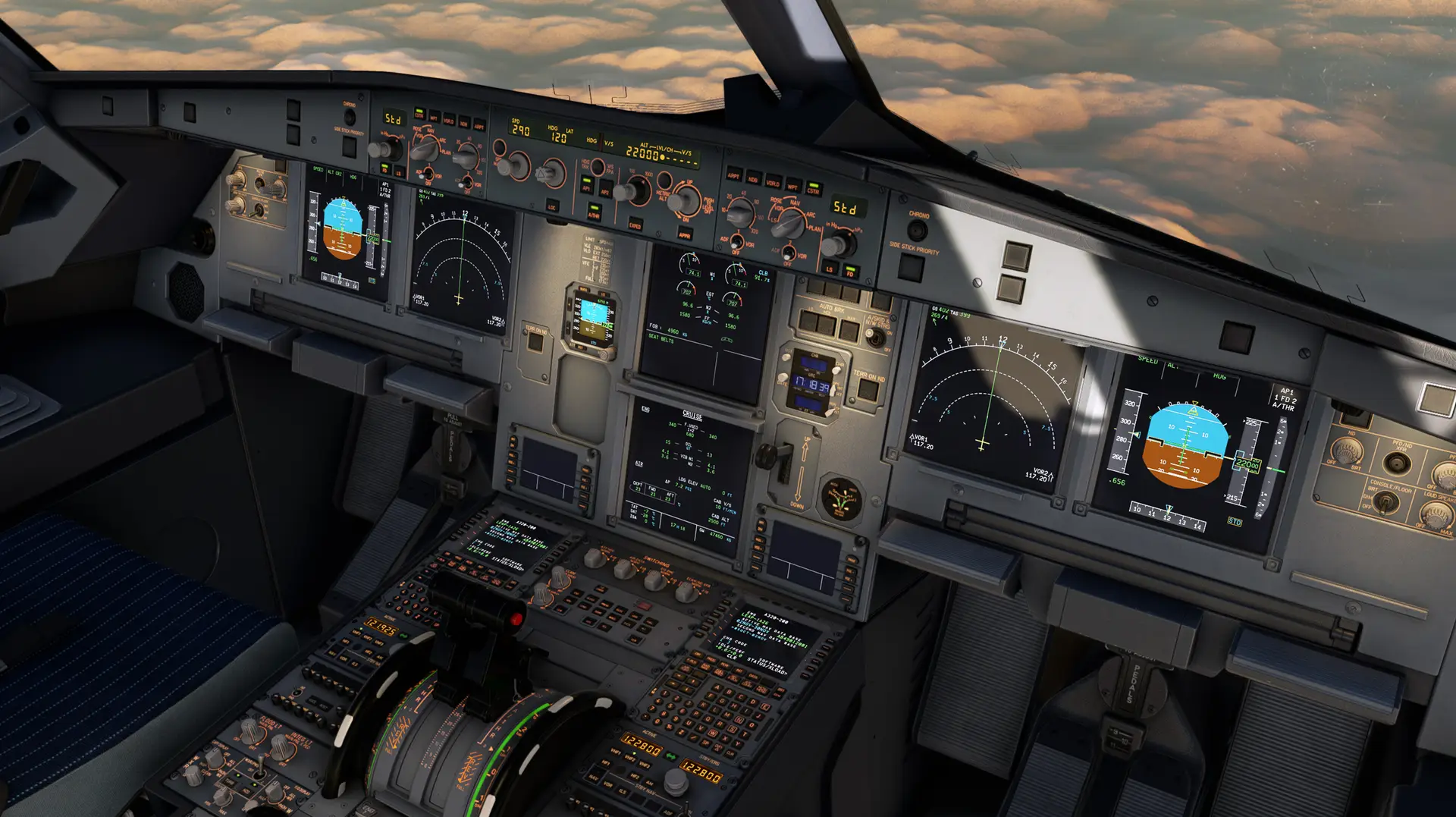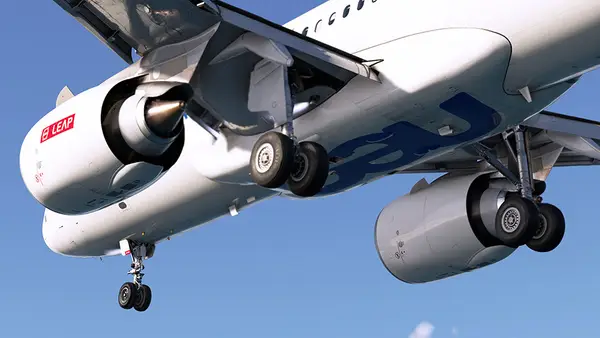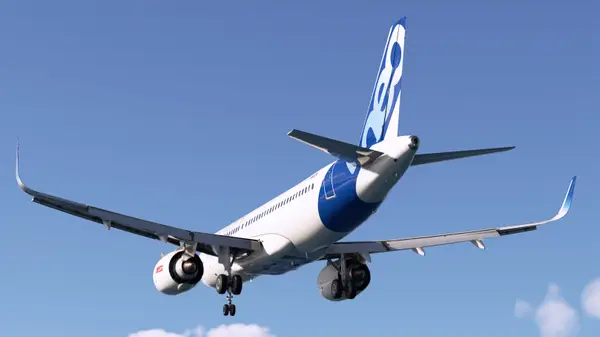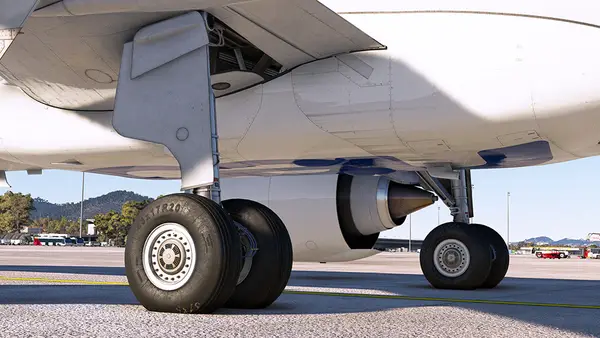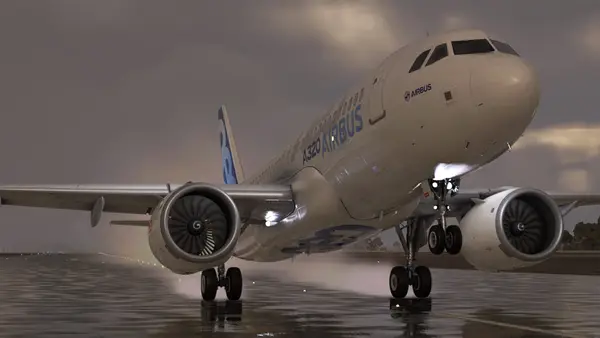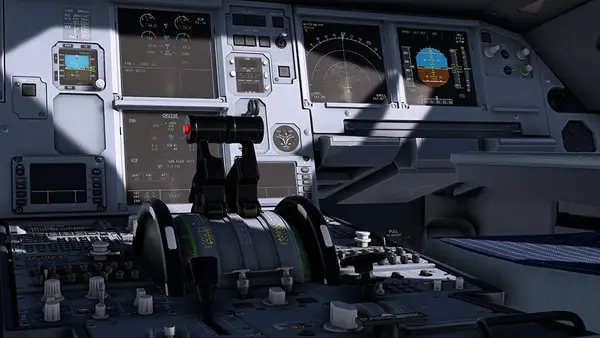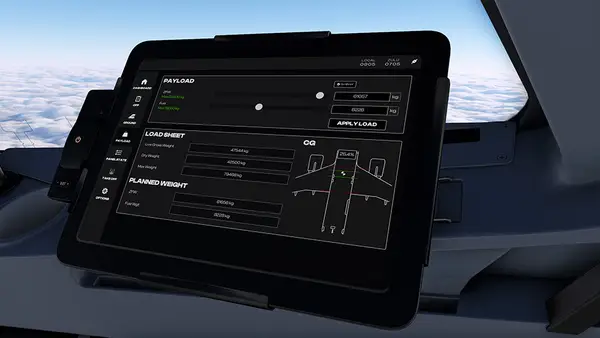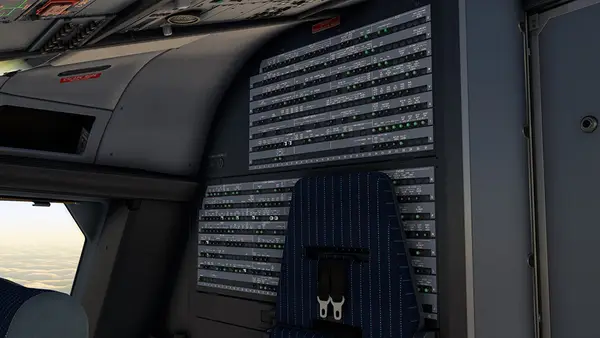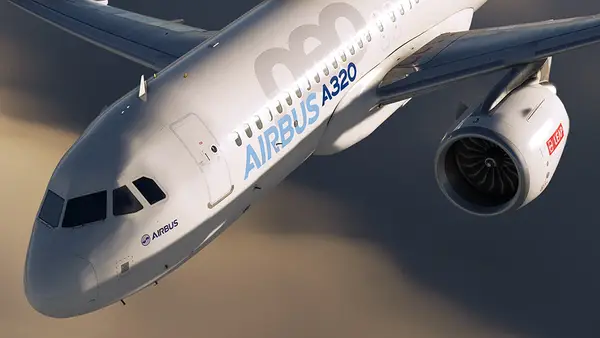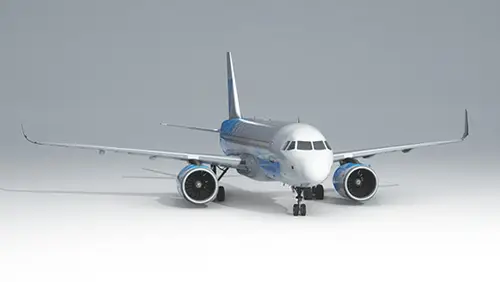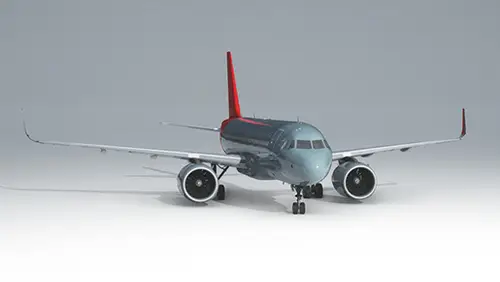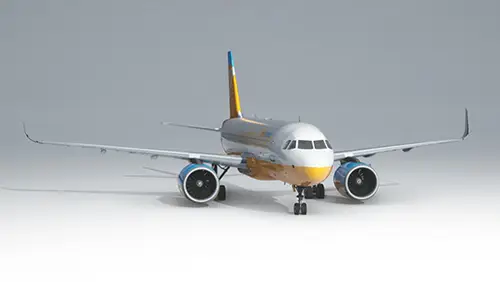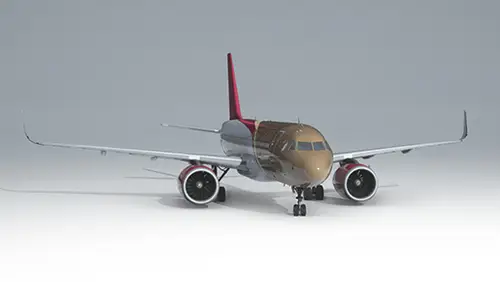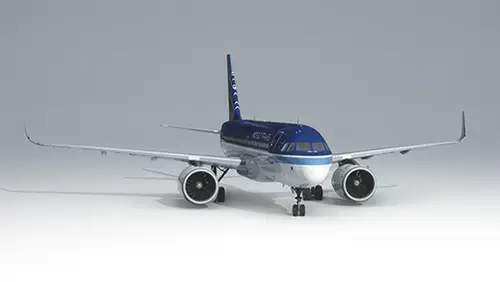This PC upgrade offers 4K textures for the aircraft’s exterior and interior and a modeled passenger cabin.
The A320neo is a twin-engine, narrow-body, short-to-medium-range commercial airliner developed and manufactured by European aviation consortium Airbus. The A320neo is a high-efficiency, evolutionary iteration of the company’s A320, one of the most successful commercial airliners ever created. The “neo” designation is an acronym for “new engine option,” a reference to next-generation, optimized-efficiency, high-bypass turbofan engines that power the aircraft.
The A320neo is the flagship model of the A320neo single-aisle line of jets that includes the A319neo and the A321neo variants. The original A320 first took to the sky on February 22, 1987 and was introduced just over a year later on April 18, 1988. The A320neo took its maiden flight on September 25, 2014 and it entered service on January 25, 2016. Piloted by two, the A320neo can carry up to 195 passengers, although it typically accommodates up to 165 in standard seating arrangements.
The A320neo variant of the A320 traces its roots to a 2006 Airbus initiative to enhance the efficiency of the A320 family of aircraft. This program focused on a series of aerodynamic improvements, including anti-vortex winglets. Trademarked as “Sharklets” by Airbus, these increase operational efficiency by reducing drag-inducing wingtip vortices. This efficiency optimizing outlook then included introducing updated powerplants. These new engines burn less fuel per mile and are more operationally robust from a maintenance standpoint. Overall, the combination of improved aerodynamic features and next-generation engines deliver a fuel savings of 20% over the original A320.
The A320neo features digital fly-by-wire control surface actuation, side-stick cockpit flight input, and state-of-the-art avionics. The aircraft measures 123 feet, 3 inches in length, stands 38 feet, 7 inches tall, and has a wingspan of 117 feet, 5 inches. It is powered by two wing-mounted CFM International LEAP (Leading Edge Aviation Propulsion) 1A26 high-bypass turbofan engines that each generate up to 27,120 pounds of thrust. The airliner has a range of 4,000 miles, a service ceiling of 39,800 feet above sea level, and a take-off run of 6,400 feet. It cruises at 518 miles per hour and has a top speed of 544 mph.

